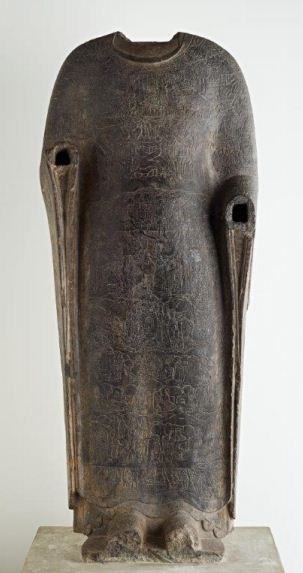By Sanskrity Sinha January 29, 2016
The researchers said 3D scans of the statue's surface revealed that the
decorative illustrations depict Buddha's teachings and life incidents. "The
Cosmic Buddha is wrapped in the simple robe of a monk, but the garment is
covered with incredibly complex illustrations of Buddhist stories," according
to a statement by Arthur M Sackler Gallery and the Freer Gallery of Art.
decorative illustrations depict Buddha's teachings and life incidents. "The
Cosmic Buddha is wrapped in the simple robe of a monk, but the garment is
covered with incredibly complex illustrations of Buddhist stories," according
to a statement by Arthur M Sackler Gallery and the Freer Gallery of Art.
Buddha or Gautama Buddha, was born a prince about 2,500 years ago in what
is now Nepal. He abandoned a life of comfort at the age of 29 to become a
sage, on whose teachings Buddhism was founded. The life-size limestone
figure has engravings that highlight his life stories.
is now Nepal. He abandoned a life of comfort at the age of 29 to become a
sage, on whose teachings Buddhism was founded. The life-size limestone
figure has engravings that highlight his life stories.

"The decoration on the front and back
of this figure's monastic robe features
scenes of the life of the historical
Buddha and cosmic imagery. On the
front chest of the robe, Mount Sumeru,
a sacred Buddhist mountain believed
to connect heaven and earth, is
depicted with two snakes, or naga,
entwined around it," the museum said.
of this figure's monastic robe features
scenes of the life of the historical
Buddha and cosmic imagery. On the
front chest of the robe, Mount Sumeru,
a sacred Buddhist mountain believed
to connect heaven and earth, is
depicted with two snakes, or naga,
entwined around it," the museum said.
"Scenes below illustrate the historical
Buddha as a prince before his
enlightenment. The tortures of hell
appear above the hem," it added.
Buddha as a prince before his
enlightenment. The tortures of hell
appear above the hem," it added.
The statue was built in China during
the reign of Northern Qi dynasty (550-
577AD) when Chinese Buddhist art
witnessed great transformations. The
museum acquired it in 1923.
the reign of Northern Qi dynasty (550-
577AD) when Chinese Buddhist art
witnessed great transformations. The
museum acquired it in 1923.
The entire surface of the sculpture is
covered with intricate scenes that are
difficult to discern with the naked eye
but is clearly visible in 3D scans,
museum curator Keith Wilson said.
covered with intricate scenes that are
difficult to discern with the naked eye
but is clearly visible in 3D scans,
museum curator Keith Wilson said.
"What make this sixth-century Chinese
object exceptional are the detailed
narrative scenes that cover its surface. The narrative scenes are spiritual
emanations rising from the Buddha himself and illustrate fundamental
Buddhist teachings," he said.
object exceptional are the detailed
narrative scenes that cover its surface. The narrative scenes are spiritual
emanations rising from the Buddha himself and illustrate fundamental
Buddhist teachings," he said.
According to Wilson, the scenes on the sculpture would originally have been
painted, as slight traces of pigment remain on the surface. The statue "may
well have been designed to serve as a teaching sculpture, probably in a
monastery, where a narrator provided commentary and instruction on the
teachings of Buddhism", he added.
Scholars earlier tried to decipher the illustrations by making rubbings of the
sculpture's surface using ink on paper, but the method posed a threat to the
ancient treasure as ink stains on the surface were left behind.
An exhibition featuring the 3D digital model and images of Cosmic Buddha
statue opens in the gallery on 30 January.
painted, as slight traces of pigment remain on the surface. The statue "may
well have been designed to serve as a teaching sculpture, probably in a
monastery, where a narrator provided commentary and instruction on the
teachings of Buddhism", he added.
Scholars earlier tried to decipher the illustrations by making rubbings of the
sculpture's surface using ink on paper, but the method posed a threat to the
ancient treasure as ink stains on the surface were left behind.
An exhibition featuring the 3D digital model and images of Cosmic Buddha
statue opens in the gallery on 30 January.

No comments:
Post a Comment